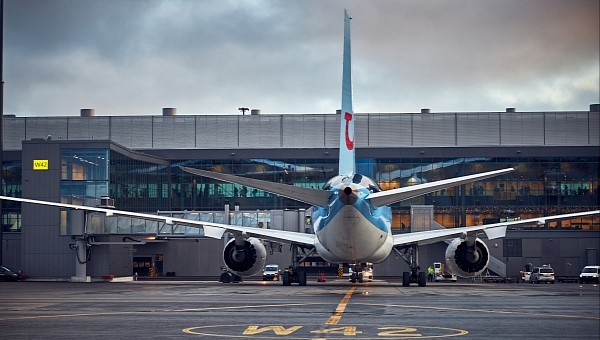Several of the largest airports in the world have been on a journey towards increased sustainability and protection of the environment. Finair is certainly one of the leaders, having already achieved carbon neutrality throughout its entire airport network in Finland. However, that’s still not enough – the ultimate goal is cutting emissions down to zero.
The green light at the end of the tunnel, in the case of commercial aviation, is expected to shine in the form of all-electric or hydrogen fueled aircraft. Of course, airports need to prepare for that as well, by researching the potential implementation of charging points, plus hydrogen storage and refueling infrastructure in the future.
But airports have their own share in increasing CO2 emission levels, which is why they need specific measures that aren’t related to flight, but to ground-based operations.
Finavia claims to have started this process a long time ago. More than two decades ago, noise pollution affecting the nearby communities was at the top of the list, and that’s what the Finnish operator started working on at its Helsinki Airport.
Other eco-friendly measures were aimed at water protection. For example, Finavia managed to avoid the pollution caused by aircraft de-icing substances, by creating separate areas for this process. This way, the harmful agents can be collected and processed, instead of reaching the environment.
The journey towards climate neutrality, officially launched in 2008, lasted for a decade. By 2019, all of the Finavia airports had reached climate neutrality, through a combination of sustainable upgrades and carbon offsetting programs.
At this point, Finavia says that its airports are responsible for 64% fewer CO2 emissions, compared to ten years ago. This was achieved mostly by reducing energy consumption as much as possible, and switching to renewable sources of energy. Right now, all the electricity used for Finavia operations is generated through wind and solar power.
Another step that’s rapidly becoming a trend at airports in different parts of the world is the replacement of standard vehicles for ground operations with EVs or ones that can run on renewable diesel.
The Finnish company believes that it’s now ready to move to the next step – cutting all CO2 emissions throughout its entire network. This will also be done gradually. First, its four airports in Lapland are set to become emission-free as soon as next year. Then, the Helsinki Airport will do the same by 2024. Finally, all of the Finavia airports are expected to become emission-free by 2025.
One of the first steps will be to use 100% renewable energy for heating. At the moment, only half of the Finavia airports have accomplished that. Also, carbon credits are still being used in order to neutralize the remaining emissions, but the plan is to reach zero-emissions without their help, in the future.
But airports have their own share in increasing CO2 emission levels, which is why they need specific measures that aren’t related to flight, but to ground-based operations.
Finavia claims to have started this process a long time ago. More than two decades ago, noise pollution affecting the nearby communities was at the top of the list, and that’s what the Finnish operator started working on at its Helsinki Airport.
Other eco-friendly measures were aimed at water protection. For example, Finavia managed to avoid the pollution caused by aircraft de-icing substances, by creating separate areas for this process. This way, the harmful agents can be collected and processed, instead of reaching the environment.
The journey towards climate neutrality, officially launched in 2008, lasted for a decade. By 2019, all of the Finavia airports had reached climate neutrality, through a combination of sustainable upgrades and carbon offsetting programs.
At this point, Finavia says that its airports are responsible for 64% fewer CO2 emissions, compared to ten years ago. This was achieved mostly by reducing energy consumption as much as possible, and switching to renewable sources of energy. Right now, all the electricity used for Finavia operations is generated through wind and solar power.
Another step that’s rapidly becoming a trend at airports in different parts of the world is the replacement of standard vehicles for ground operations with EVs or ones that can run on renewable diesel.
The Finnish company believes that it’s now ready to move to the next step – cutting all CO2 emissions throughout its entire network. This will also be done gradually. First, its four airports in Lapland are set to become emission-free as soon as next year. Then, the Helsinki Airport will do the same by 2024. Finally, all of the Finavia airports are expected to become emission-free by 2025.
One of the first steps will be to use 100% renewable energy for heating. At the moment, only half of the Finavia airports have accomplished that. Also, carbon credits are still being used in order to neutralize the remaining emissions, but the plan is to reach zero-emissions without their help, in the future.







